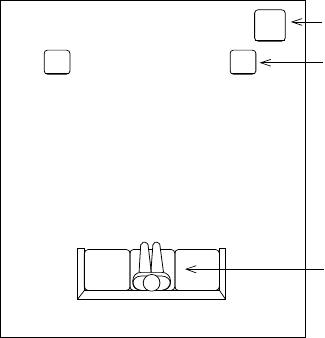
3
INTRODUCTION
ES150PW/ES250PW
Wireless Powered Subwoofers
For more than 60 years, JBL
®
audio equipment has been used in concert halls,
recording studios and movie theaters around the world, and become the
hands-down choice of leading recording artists and sound engineers.
With the JBL ES Series, innovative technologies such as titanium-laminate-dome
tweeters, Elliptical Oblate Spheroidal
™
(EOS) waveguides and PolyPlas
™
transducer
reinforcement are available to you.
In addition, the ES150PW/ES250PW’s compact enclosure and wireless capability
allow for easy integration into any residential environment. Enjoy!
Unpacking the Subwoofer
If you suspect damage from transit, report it immediately to your dealer. Keep
the shipping carton and packing materials for future use.
Included
1 x Owner’s manual
1 x USA warranty sheet
1 x Subwoofer
1 x 15' Audio cable, RCA-RCA
1 x Transmitter module
1 x Power supply for transmitter
1 x 120V AC power cord for transmitter power supply
1 x 6' Audio cable, RCA-RCA
1 x Wall-mount bracket for transmitter (with two pan-head M3 x 4 machine
screws for attaching wall-mount bracket to transmitter)
4 x Small, round, self-adhesive feet – to be attached on transmitter’s
left side panel if transmitter is to be used vertically
PLACEMENT
Since the installation of a subwoofer can be somewhat more complicated
than installing full-range speakers, it is essential that you read this section
very carefully prior to connecting the subwoofer to your system. Should you
have questions relating to your installation, it is advisable to contact either
your dealer or the JBL Customer Service Department for advice.
The performance of the subwoofer is directly related to its placement in the
listening room and how you align the subwoofer with its satellite speakers.
The ES150PW/ES250PW’s wireless capability makes it even easier to properly
locate the subwoofer in your room. Setting the volume of the subwoofer in relation
to the left and right speakers is also of critical importance because it is essential
that the subwoofer integrate smoothly with the entire system. Setting the
subwoofer’s volume level too high will result in an overpowering, boomy bass.
Setting the volume level too low will negate the benefits of the subwoofer.
Here are several additional facts on installation that may prove useful. It is
generally believed by most audio authorities that low frequencies (below 125Hz)
are nondirectional and, therefore, placement of a subwoofer within any listening
room is not critical. While in theory it is true that the larger wavelengths of
extremely low frequencies are basically nondirectional, the fact is that, when
installing a subwoofer within the limited confines of a room, reflections, standing
waves and absorptions generated within the room will strongly influence the
performance of any subwoofer system. As a result, the specific location of
the subwoofer becomes important, and it is strongly recommended that you
experiment with placement before choosing a final location.
Placement will depend upon your room and the amount and quality of bass
required (for example, whether or not your room permits placement of the
subwoofer near either satellite).
Figure 1. This example shows the subwoofer positioned behind the
right-channel satellite speaker to re-create the actual location of bass
instruments in an orchestra and/or add impact to movie soundtracks.
SUB
RIGHT-
CHANNEL
SPEAKER
PRIMARY
LISTENING
AREA
JBLP2706_ES150-250PW-120om 5/20/08 4:15 PM Page 3










